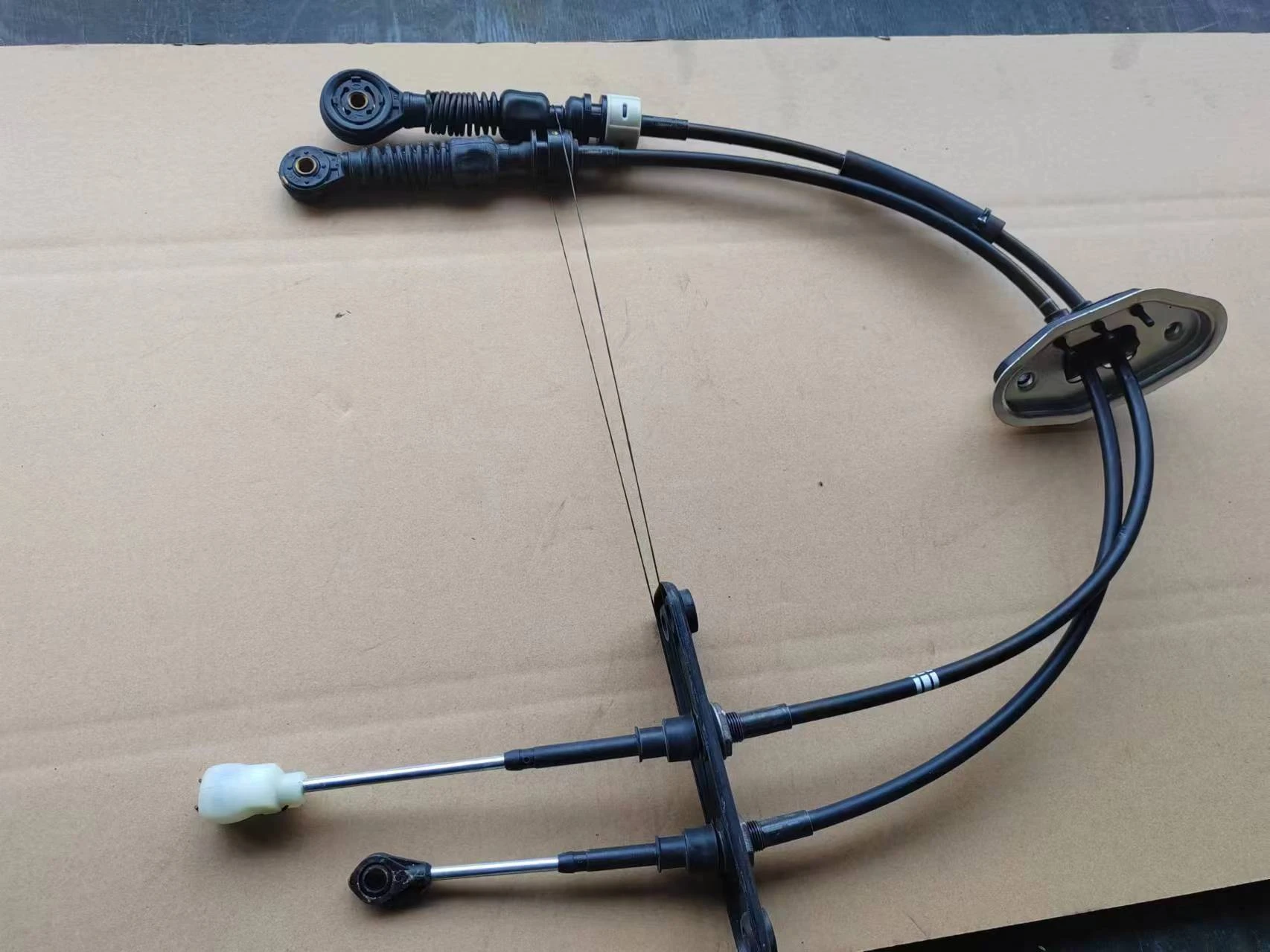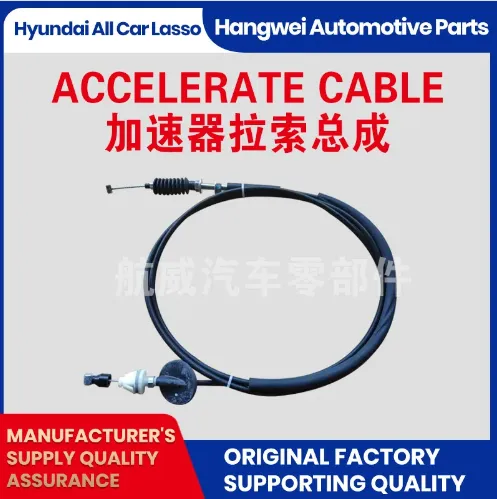Premium Gear Shift Cable Durable Transmission Linkage Replacement
- The Critical Role of Gear Shift Cables in Manual Transmissions
- Failure Statistics: When Linkage Cables Break Down
- Engineering Excellence in Modern Cable Technology
- Performance Benchmark: Top Gear Shift Cable Manufacturers
- Customized Solutions for Unique Vehicle Requirements
- Reviving Classics: Fleet Management Case Studies
- Choosing Quality: Why Your Gear Shift Cable Investment Matters

(gear shift cable)
The Critical Role of Gear Shift Cables in Manual Transmissions
Operating as the neural pathway between driver intention and mechanical action, gear shift cable
s fundamentally determine driving precision. These high-tension assemblies translate cockpit lever movements into precise gear selection through intricate synchronization mechanisms. Unlike hydraulic alternatives, cable systems eliminate fluid complexity while maintaining direct tactile feedback valued by driving enthusiasts. With most manual transmission vehicles relying on cable-operated shift linkage, their proper calibration directly impacts gear engagement accuracy, vibration dampening, and overall powertrain responsiveness.
When compromised by wear or misalignment, drivers experience symptoms ranging from vague shifting to complete disconnection between gear lever and transmission. Preventative inspections should assess cable tension, conduit integrity, and terminal socket wear points every 30,000 miles. Industry surveys indicate proper linkage maintenance reduces transmission repair frequency by 23% across light-duty vehicles manufactured after 2010. With over 78 million manual transmission vehicles operating globally, these components represent mission-critical durability elements.
Failure Statistics: When Linkage Cables Break Down
Automotive diagnostic data reveals gear shift linkage cables account for 37% of manual transmission control system failures. The most prevalent failure modes include:
- Cable fraying: Caused by inadequate conduit sealing allowing contaminants; represents 58% of linkage failures
- End fitting separation: Resulting from metal fatigue at stress points (28% of failures)
- Conduit collapse: Plastic degradation from under-hood temperatures leads to binding (14%)
Routine fleet maintenance logs indicate broken gear shift linkage cable issues peak between 70,000-90,000 miles across mainstream sedans and light trucks. Repair frequency increases by 40% in regions using road de-icing agents, with corrosion being the primary accelerator. Mechanics report the average immobilization period after cable failure is 3.7 days due to parts procurement challenges.
Engineering Excellence in Modern Cable Technology
Premium shift cable solutions incorporate breakthrough materials addressing traditional failure points. Multilayered conduit construction featuring PTFE inner liners reduces friction coefficients to just 0.04, compared to 0.19 in conventional nylon sleeves. This innovation alone extends service life by 60% according to SAE durability testing protocols. Additionally, aircraft-grade 7x7 strand cabling provides 43% greater tensile strength than standard 7x1 designs while maintaining flexibility.
| Feature | Standard Cable | Premium Upgrade | Performance Gain |
|---|---|---|---|
| Load Cycles | 300,000 | 500,000+ | 67% improvement |
| Temperature Range | -30°C to +85°C | -40°C to +125°C | Extended by 38% |
| Vibration Resistance | 5g @ 50Hz | 8g @ 120Hz | Vibration tolerance doubled |
Terminal ends now incorporate spherical bearings rather than bushings, reducing pivot point wear by 82% in articulated linkage applications. The combined advancements translate to precise shift feel retention throughout the ownership cycle.
Performance Benchmark: Top Gear Shift Cable Manufacturers
| Manufacturer | Price Range | Warranty | Custom Options | Heat Resistance |
|---|---|---|---|---|
| GenTec Automotive | $38-$97 | Lifetime | 43 vehicle-specific designs | 600°F continuous |
| AutoLink Dynamics | $27-$84 | 5 years | Length customizations | 450°F continuous |
| Precision Shift Co. | $45-$112 | 10 years | Race-spec calibration | 700°F peak |
| DuraLink Systems | $32-$89 | 7 years | Limited OE reproductions | 400°F continuous |
Current gear shift cable price variations primarily reflect differences in proprietary material technology rather than manufacturing complexity. While entry-level options suffice for light-duty applications, performance vehicles benefit significantly from thermal-resistant conduits and cold-forged fittings that maintain alignment precision under high-stress conditions.
Customized Solutions for Unique Vehicle Requirements
Leading providers now offer application-specific cable engineering that addresses factory design shortcomings. Aftermarket specialists can produce linkages accounting for:
- Engine swap installations requiring altered cable routing paths
- Vibration harmonics management through tuned counterweights
- Competition calibration reducing shift throw by up to 40%
For restoration specialists, digital scanning recreates obsolete geometry with .03mm dimensional accuracy. Performance applications integrate adjustable bias springs enabling cockpit-adjustable shift resistance—crucial for rally vehicles alternating between tarmac and gravel stages. Testing confirms custom bent conduit sections reduce routing strain better than universal kits.
Reviving Classics: Fleet Management Case Studies
A delivery service replacing gear shift linkage cable systems across its 47-van fleet reduced transmission warranty claims from 37 annually to just 3. The upgrade cycle included laser-aligned cable anchoring brackets addressing misalignment issues costing $18,500 yearly in repairs. Similarly, a municipal authority retrofitted 132 police interceptors with thermal-shielded cables, eliminating hot weather shift failure incidents reported during emergency responses.
Collector vehicle specialists document how precise linkage restoration transforms driving dynamics. After installing dimensionally accurate reproduction cables, a 1972 Alfa Romeo GTV showed 58% reduction in shift effort and eliminated 3rd-gear synchronization issues previously misdiagnosed as transmission problems.
Choosing Quality: Why Your Gear Shift Cable Investment Matters
The gear shift linkage cable serves as the tactile communication channel between driver and drivetrain. Selecting units with aerospace-derived materials ensures shifting precision remains uncompromised throughout the vehicle's operational lifespan. While initial gear shift cable price differences may seem considerable, durability analytics prove premium options deliver 11-14 year service versus 5-7 years for economy lines—a significant long-term value proposition.
Manufacturing breakthroughs now allow precise force transmission while resisting the three main degradation factors: cyclic fatigue, chemical corrosion, and thermal breakdown. Consulting technical specifications regarding strand construction and conduit materials provides greater insight than brand marketing when selecting your vehicle's critical shift linkage components.

(gear shift cable)
FAQS on gear shift cable
Q: What is a gear shift cable and what does it do?
A: A gear shift cable transmits mechanical force from the gear lever to the transmission. It directly controls gear selection in manual vehicles. This cable ensures precise linkage between your shifter and gearbox components.
Q: Are gear shift linkage cables and gear shift cables the same thing?
A: Yes, both terms refer to the component connecting the shifter to the transmission. "Gear shift linkage cable" is a technical synonym for "gear shift cable". They perform identical functions in manual shifting systems.
Q: What symptoms indicate a broken gear shift linkage cable?
A: Key signs include inability to shift gears or stuck gear positions. You may experience overly loose shifter movement or complete detachment of the gear knob. Metallic noises when shifting also suggest cable failure.
Q: Can I drive with a broken gear shift linkage cable?
A: No, driving with a damaged cable is unsafe and impractical. The vehicle won't reliably change gears or may get stuck in one gear. Immediate replacement is required to restore transmission control and prevent roadside stranding.
Q: What determines gear shift cable price?
A: Prices range from $20-$400 based on vehicle brand and cable quality. Aftermarket cables cost less than OEM parts. Installation complexity and labor hours also significantly impact total replacement costs.
-
Clutch Line: Braided, Leak-Proof, OEM-Grade PerformanceNewsNov.10,2025
-
Throttle Cable: Durable, Smooth Control & Universal FitNewsNov.10,2025
-
Throttle Cable: Durable, Smooth, Universal Fit, Easy InstallNewsNov.10,2025
-
Clutch Line: Durable, Leak-Proof, OEM-Grade PerformanceNewsNov.10,2025
-
Hand Brake Cable | Custom, Universal & Trailer SolutionsNewsNov.10,2025
-
Clutch Line: High-Pressure, OEM-Fit, Corrosion-ResistantNewsNov.03,2025
